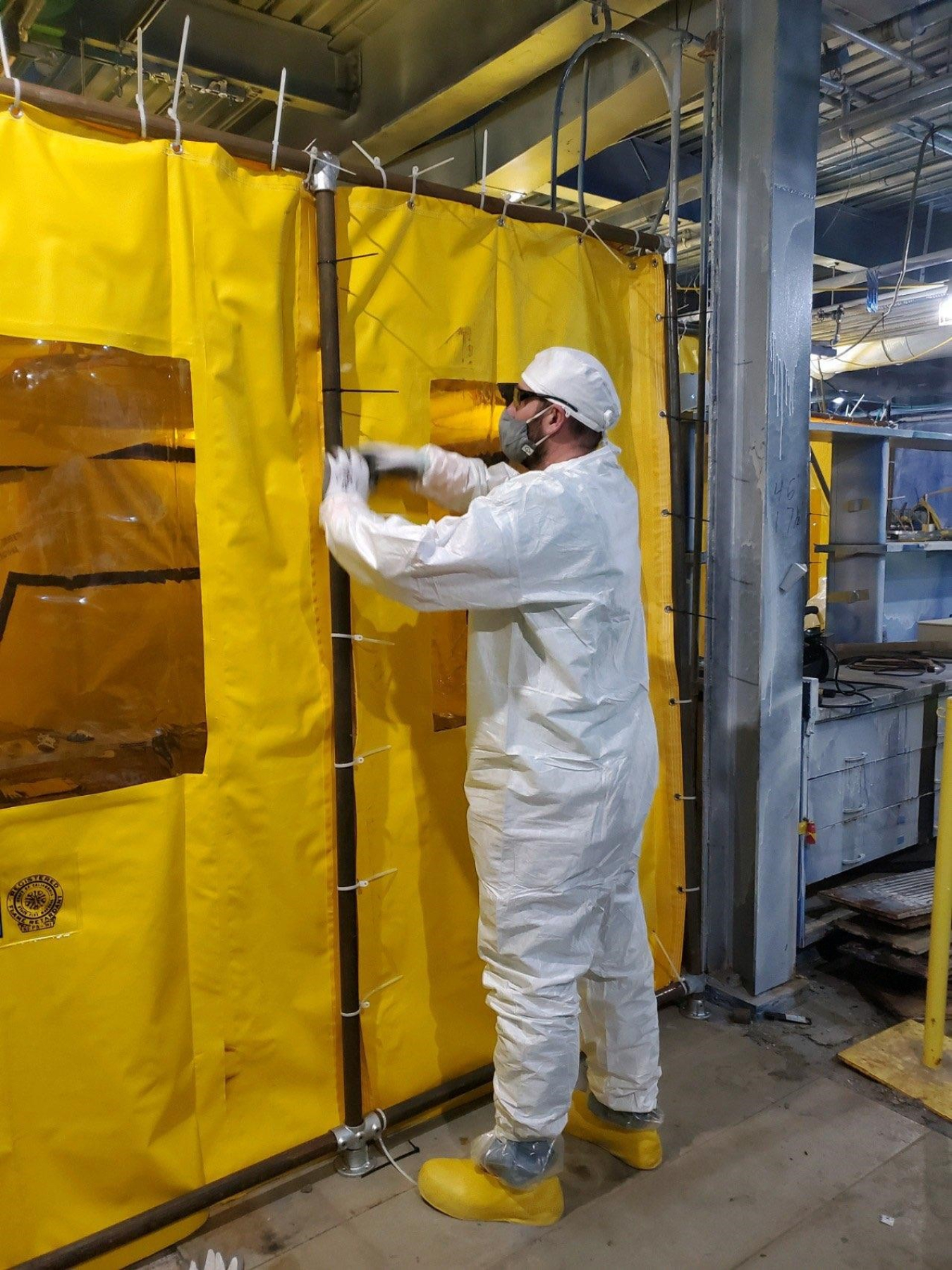WVDP workers are preparing to remove ductwork that carried exhaust from past operations at the Main Plant Process Building as part of deactivation preparations for the facility’s future demolition — among EM’s 2021 priorities.
Office of Environmental Management
April 20, 2021
Jim Kuhn, Jr., an employee with CH2M HILL BWXT West Valley, helps set up a protective tent above the Vent Wash Room in the Main Plant Process Building to support ductwork cutting as the site prepares for the future demolition of the facility at the West Valley Demonstration Project.
WEST VALLEY, N.Y. – West Valley Demonstration Project (WVDP) workers are preparing to remove ductwork that carried exhaust from past operations at the Main Plant Process Building as part of deactivation preparations for the facility’s future demolition — among EM’s 2021 priorities.
EM and its prime contractor CH2M HILL BWXT West Valley (CHBWV) recently constructed a containment tent above a room and access door in the building to support cutting a 26-inch-wide duct inside the room.
“The WVDP team’s work was well planned and executed in an effort to maintain safety, including the addition of COVID-19 protocols,” EM WVDP Deputy Federal Project Director Steve Bousquet said.
Known as the Vent Wash Room, the space housed a ventilation "scrubber” that removed airborne particulates resulting from fuel reprocessing operations that ceased in 1972.
Several other areas within the plant — including the product purification and chemical process cells, and a fuel receiving and storage facility — sent exhaust to the room through the ductwork. The exhaust was then directed to a ventilation exhaust cell where it was filtered before being discharged to the plant’s stack.
“This work activity will allow the continued deactivation tasks when we resume complex work activities when it’s safe to do so under COVID-19 protocols,” said Scott Chase, CHBWV facility disposition operations manager.
To receive the latest news and updates about the Office of Environmental Management, submit your e-mail address.

